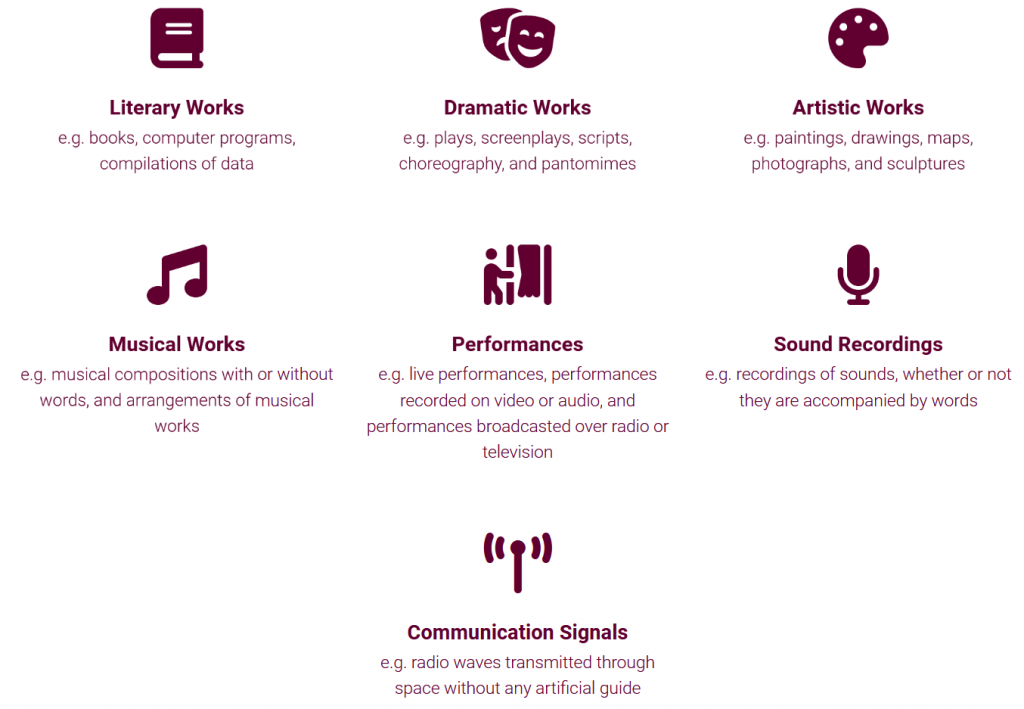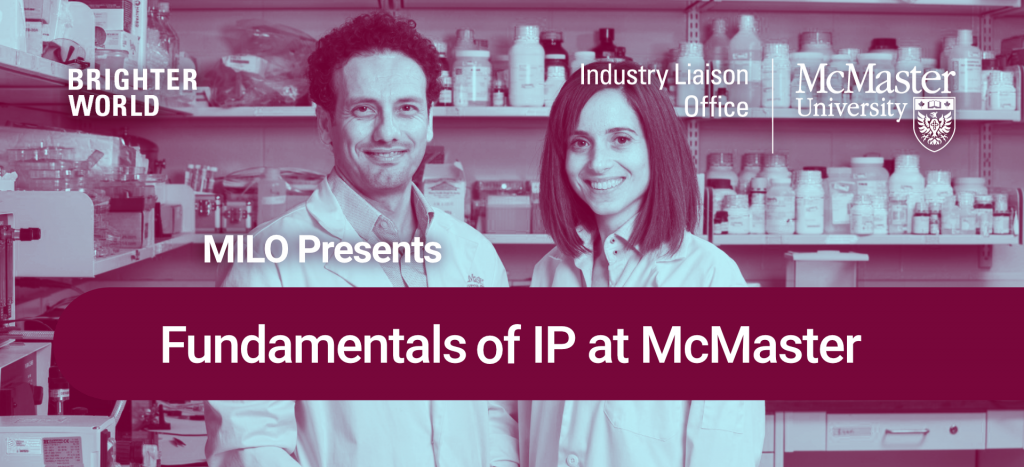
What is copyright?
Copyright is the exclusive legal right to produce, reproduce, publish, perform, or prepare derivative works of all, or a substantial part of, an original work, such as literary (including computer programs) work; artistic, dramatic, or musical works; performances; sound recordings; and communication signals.
The Canadian Copyright Act automatically grants protection for a work when it is fixed into a tangible medium such as a book, software code, a video, etc. In Canada, copyright protection starts upon the creation of the fixed form and ends 70 years following the death of the last creator of the work. After that, the work is released to the public domain, and anyone can use it freely.
Although it is not necessary to do so, it is possible to register a copyright with the Canadian Intellectual Property Office. This makes it easier to prove ownership of the copyright, protect ownership rights, and take legal action in the event of copyright infringement.
Copyright Eligibility
Copyright offers legal protection for seven categories of works:
- Literary Works: g. books, computer programs, compilations of data
- Dramatic Works: g. plays, screenplays, scripts, choreography, and pantomimes
- Artistic Works: g. paintings, drawings, maps, photographs, and sculptures
- Musical Works: g. musical compositions with or without words, and arrangements of musical works
- Performances: g. live performances, performances recorded on video or audio, and performances broadcast over radio or television
- Sound Recordings: g. recordings of sounds, whether or not they are accompanied by words
- Communication Signals: g. radio waves transmitted through space without any artificial guide

For additional information about the types of copyright, please visit the Canadian Intellectual Property Office’s Guide to Copyright.
A work must meet three conditions to be protected by copyright:
- Originality – Originality means your work must result from your creativity. Copying somebody else’s work does not make your work original. You need to have used your skill and judgment to create the work.
- Expression – Copyright only protects the expression of an idea, not ideas by themselves. For example, if someone authors a book about a girl who lives with seven dwarves, then they have the copyright over that specific story in how they expressed it.
- Fixation – Works must be fixed in a tangible, material, and permanent format such that it can be perceived, reproduced, or otherwise communicated. Some common formats could include:
- Described or written on paper.
- Captured with video/audio recordings (digital or analogue).
- Saved as a computer file.
It is worth noting that students and researchers are constantly generating various copyrighted works. Homework assignments, data visualizations, posters, presentations, reports, and even emails are all examples of copyrighted works. Most times, having copyright protection is not important for trivial works, but it is worth considering what copyrights you may already have.
What is not protected by copyright?
Ideas are not protected by copyright, only the expression of them. To make this distinction clear, it is worthwhile to consider an example of this:
An author writes a book describing electric vehicles that includes diagrams, technical drawings, and sufficient information to understand how to construct an electric vehicle. The author owns copyright over the specific description of the car, images/drawings they created, and of the book as it is written. The author does not, however, own the invention of the electric car or the ideas presented in the book.
If someone were to read this book, they would be free to use the ideas presented to design their own electric vehicle or write their own book on the subject. To avoid infringement, they must not copy specific passages or images from the book. They should also ensure that any material they create is sufficiently unique so as not to be considered a derivative work, even if accidentally.
Additionally, works that have not been fixed remain as ideas and therefore cannot be copyrighted. For example, someone spontaneously invents and performs a dance routine. It is not eligible for copyright unless the routine was also recorded in some way.
Furthermore, facts (such as mathematical formulae); commonly known information (such as standard calendars); or names, short phrases, or titles; cannot be copyrighted.

Who owns the copyright and what does it protect?
Owning the copyright for a work means you have the exclusive right to benefit from its use commercially. Those who want to use copyrighted work must first acquire the right, either via a license or other form of written permission from the owner. When copyrighted material is used in a way that violates the owner’s copyright, it is called copyright infringement.
In Canada, the author/creator of a work is typically the first owner of copyright, but an agreement (e.g. employment contracts, publishing or consulting agreements) can assign ownership to someone else. However, the creator of an original work will always be its author, regardless of who owns the copyright.
In the case of a collaboratively created work, co-authors will jointly own the copyright unless an agreement specifies otherwise. All joint owners have equal right to benefit from the copyright.
Distinguishing between authorship and ownership is essential in fully understanding copyright protection. The author is tied to the work, in that their life will always have a bearing on the duration of copyright protection. Additionally, the author can maintain moral rights over a work, which will be discussed at the end of this lesson.
Moral Rights
Copyright includes not only economic rights but also moral rights.
Moral rights protect the author’s right of:
- Attribution: to be credited with the work, including anonymity or the use of pseudonyms
- Integrity: The work cannot be modified or used in association with a product or service in a way that causes prejudice to the author’s honor or reputation.
Unlike other IP rights, moral rights cannot be sold or given away. Therefore, an author retains their moral rights in work unless they waive them. Note that these same rights do not apply to the copyright owner unless they are also the author of the work.
Summary
- Copyright is the exclusive legal right to produce, reproduce, publish, perform, or create derivative works of all, or a substantial part of, an original work.
- Copyright is automatically acquired upon creation of an original work.
- Copyright protects works that are original, expressions of ideas, and have been fixed in some tangible format.
- The author of a work will always remain its author even if they do not own the copyright. This affords them some additional moral rights, such as the rights of attribution and integrity.
Register for Fundamentals of IP at McMaster Complete Course

Learn from enhanced and interactive lessons, get access to more content, and receive a certificate of completion.
These modules are created and facilitated by the McMaster Industry Liaison Office (MILO)
Disclaimer: The content of these modules provides general information regarding basic principles of intellectual property law and of commercialization. The content should not be taken as legal or professional advice. For specific advice, seek independent legal counsel.
McMaster University recognizes and acknowledges that it is located on the traditional territories of the Mississauga and Haudenosaunee nations, and within the lands protected by the “Dish with One Spoon” wampum agreement.
© McMaster Industry Liaison Office (MILO), all rights reserved, 2023. For more information, please visit: milo.mcmaster.ca
